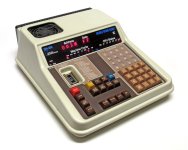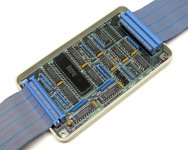Good morning,
As the title implies, I am in need of an ICE for 8085 for my Datamaster. There aren't many on sale and the few in conditions are both expensive per se and expensive to deliver at my location. Not talking about the voltage difference between our European electric network and the one from the USA.
For this reason, I would like to ask if there is any kit to build or any open project to deal with that necessity? What other options would I have?
Thank you in advance!
As the title implies, I am in need of an ICE for 8085 for my Datamaster. There aren't many on sale and the few in conditions are both expensive per se and expensive to deliver at my location. Not talking about the voltage difference between our European electric network and the one from the USA.
For this reason, I would like to ask if there is any kit to build or any open project to deal with that necessity? What other options would I have?
Thank you in advance!



